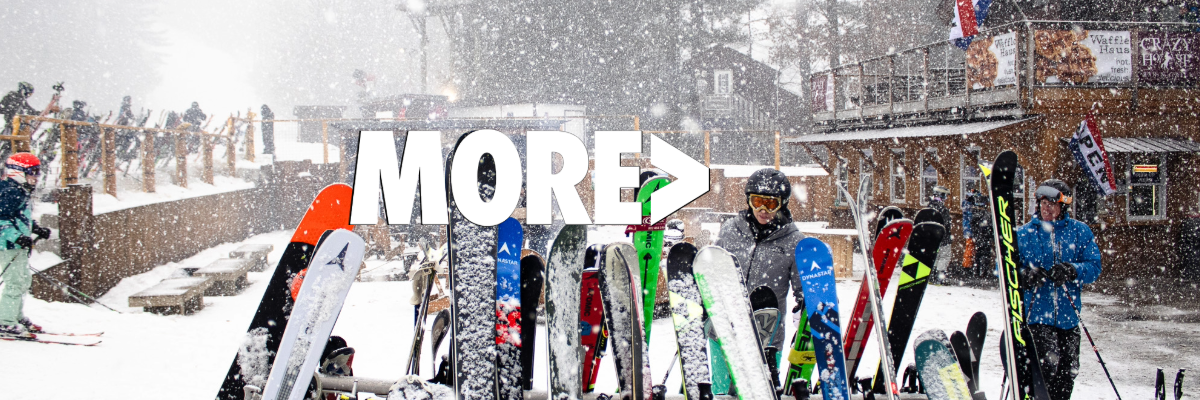Get full access to Outside Learn, our online education hub featuring in-depth fitness, nutrition, and adventure courses and more than 2,000 instructional videos when you sign up for Outside+
Sign up for Outside+ today.
Most skiers I know cite an avid gear consumption habit as a side effect of their addiction to skiing. It’s inevitable—the more we ski, the more gear we somehow need (or think we need). But our collective gear habit, while fun to geek out on, isn’t ideal for the planet we’re trying to protect.
Buying and selling used gear isn’t a new concept—I’ve been slinging beat down skis on Facebook Marketplace for years—but it’s often a hassle, and aside from big ticket items I’m determined to get rid of, the rest of my unused gear usually gets overlooked. On the other end of the spectrum, I rarely think to browse used listings for gear, since dealing with individual sellers can be a gamble.
Related: 5 things you should know before buying ski boots online
Enter Geartrade, an online marketplace specifically for outdoor equipment managed and curated by a team of gear nerds. The site launched in 1999 as a peer-to-peer marketplace, but Aaron Provine, Owner and President of Geartrade, has been working with his team for the past three years to revamp the platform and streamline the process of buying and selling used gear, transitioning the site to a consignment model. While the site has technically been around since the beginning of the world wide web, in its infancy it was a simple, unrefined website where people could informally post gear they wanted to buy and sell. “The focus is reducing friction in the overall process so that people are more willing to sell their gear,” he says. “The outdoor industry has done a fantastic job of building awesome products, and we know they’re built to last. We just want to keep them out there longer.”
Also read: How to tell if you should you reuse, repair, or replace your gear
The website, which is now organized like e-commerce sites such as Backcountry.com and REI, markets gear under a consignment model, where sellers get paid once their items sell. Like other consignment shops, Geartrade takes a cut for the handling, which varies in percentage depending on the value of the item. But the appeal of Geartrade is that unlike a brick and mortar consignment shop, it has a nationwide reach.
If you’ve got gear to sell, the process is simple. Geartrade will mail you a (free) shipping label and even a box. All you have to do is drop your gear in the box and ship it off for the Geartrade team to take care of the rest. Geartrade handles all the shipping, listing, and interaction with customers, which, if you’ve ever listed anything on Facebook or Craigslist, you know is a big time suck. Shipping a box of everything you want to sell for the season takes just a few minutes, while you might spend hours over the course of a few months creating those online listings yourself.
Buyers, meanwhile, can scroll through the site and order whatever they need, used, knowing that Geartrade has screened each item for quality and authenticity before it goes back out the door. Skis, bindings, and other technical gear are evaluated, so you don’t have to worry about tracking down that guy you messaged on Facebook if your skis turn up with a massive coreshot. Buyers can also return any item (no questions asked) within 14 days of purchase.
While sellers on peer-to-peer marketplaces like Facebook Marketplace or Craigslist get to keep 100 percent of their profits, compared to the 40-70 percent profit Geartrade sellers get, it all boils down to convenience. Provine is convinced that the convenience factor is going to get far more used gear into the rotation. And for Provine, the used gear business is all about reducing our impact on the environment. Provine came to Geartrade from a career at Backcountry.com, drawn to moving the industry towards recommerce, and a more circular model of consumption. “Our eye on the prize is not tomorrow or next year,” he says. “It’s thinking about what retail is going to look like in 10 or 20 years down the road. Consumption and growth is going to happen no matter what, and we’re trying to give people the opportunity to pass things on to someone else who wants to use it.”
Provine says that interest in buying and selling used gear has grown “astronomically” in the last few years, and he cites the outdoor community’s collective growing interest in reducing our impact. “People want to make purchasing decisions based on the environment, so the interest is there,” he says.
If people aren’t flocking to used gear for environmental reasons, they’re interested in it for financial reasons. Buying used can decrease the barrier to entry to an expensive sport (skiing, that’s you). “If you go out and buy new skis and bindings you’ve probably already spent $1,000. That’s a lot of money,” says Provine. “This model allows people to try out the sport, and if you don’t like it you can resell it. You can recoup some of those costs.”
Whatever motivates you to buy or sell used gear, Geartrade is a win-win because they make it so easy. And that’s the point. Making the whole process easier for buyers and sellers is a way to ensure that this trend is here to stay. So next time you need a gear refresh—maybe a new shell or a midlayer—browse used listings first. You never know—one skier’s trash may be another skier’s treasure.
More Content for Conscious Gearheads
Rossignol introduces the world’s most recyclable ski yet
Finally, a way to keep old ski boots out of the landfill
7 steps to storing your gear the right way this summer
